HES – Data Dive
HES – Data
Throughout the school year, students at each school in Haywood County Schools are assessed three times in order to gauge where each individual student is on their personal learning journey. These assessments allow teachers to monitor student learning progress while also gaining insight into what specific areas of a subject a student could use extra support.
While teachers, schools, and districts are measured mostly on TNReady data, the benchmark assessments given throughout the year provide a more accurate view at the learning taking place in the classroom. The assessments used to measure learning in each school in HCS are the AimsWeb assessments in Reading and Math and the IReady assessments in the same subjects. The AimsWeb assessment is given in Kindergarten through Tenth Grades. The IReady assessment is given in grades K-8.
The AimsWeb assessments in Reading and Math measure basic skills in each subject. Basic skills include reading comprehension and fluency and making calculations of measurements, sizes, and amounts. AimsWeb is an assessment that is used to monitor progress and ensure the majority of our students at each grade level are working toward basic grade level skills in each subject.
The IReady assessment measures student progress in relation to state academic standards. This assessment is not always reflective of the basic skills of students in Reading and Math, but shows how well students understand the standards being taught. State standards are created in order to push the students to think at a deeper level beyond the basic skill levels of a subject. These tests combine test taking skills with in-depth knowledge of each subject. This assessment is more closely aligned with the year-end TNReady standardized tests given each spring.
Over the next two weeks, HCS will be sharing grade level data from each school that shows the results from AimsWeb, IReady, and the TNReady assessments. The TNReady assessment is given in grades 2-8.
At the beginning of the year, each school sets a goal based on the fall benchmark. In the horizontal graphs below, results from the fall, winter, and spring benchmark assessments will be shown and compared with the goals set from each school
Students at Haywood Elementary School not only take the AimsWeb and IReady assessments, but the second grade students also take the TNReady assessment for the first time.
Students at HES showed gains each time they were assessed throughout the year. Below are horizontal graphs depicting the data collected from the AimsWeb and IReady tests that were given in the fall, winter, and spring. The second grade TNReady scores will also be included below the AimsWeb and IReady graphs.
AimsWeb – First and Second Grade
AimsWeb uses a three tiered system to measure student progress and provide information regarding where students are on their learning paths. While we want all students to be in Tier 1, a more realistic goal (especially coming on the heels of two fractured years of in-person learning) is to see substantial growth in our collective group of Tier 1 students. The tiers are described below:
Tier 1 = Low Risk (about 75%–95% of students in this group will meet the target): Students are on track to meet the end-of-year target and are least likely to need intervention. These students should continue to receive the general instructional program. Typically, the majority of students fall into this category.
Tier 2 = Moderate Risk (about 25%–65% of students in this group will not meet the target): Students are not on track and have a moderate risk of not meeting the end-of-year target. These students require some type of intervention, often taking the form of supplemental small group instruction.
Tier 3 = High Risk (about 50%–90% of students in this group will not meet the target): Students are not on track and are typically well-below grade level. These students have a high risk of not meeting the end-of-year target without intensive, individualized instructional intervention.
HES – First Grade – Reading
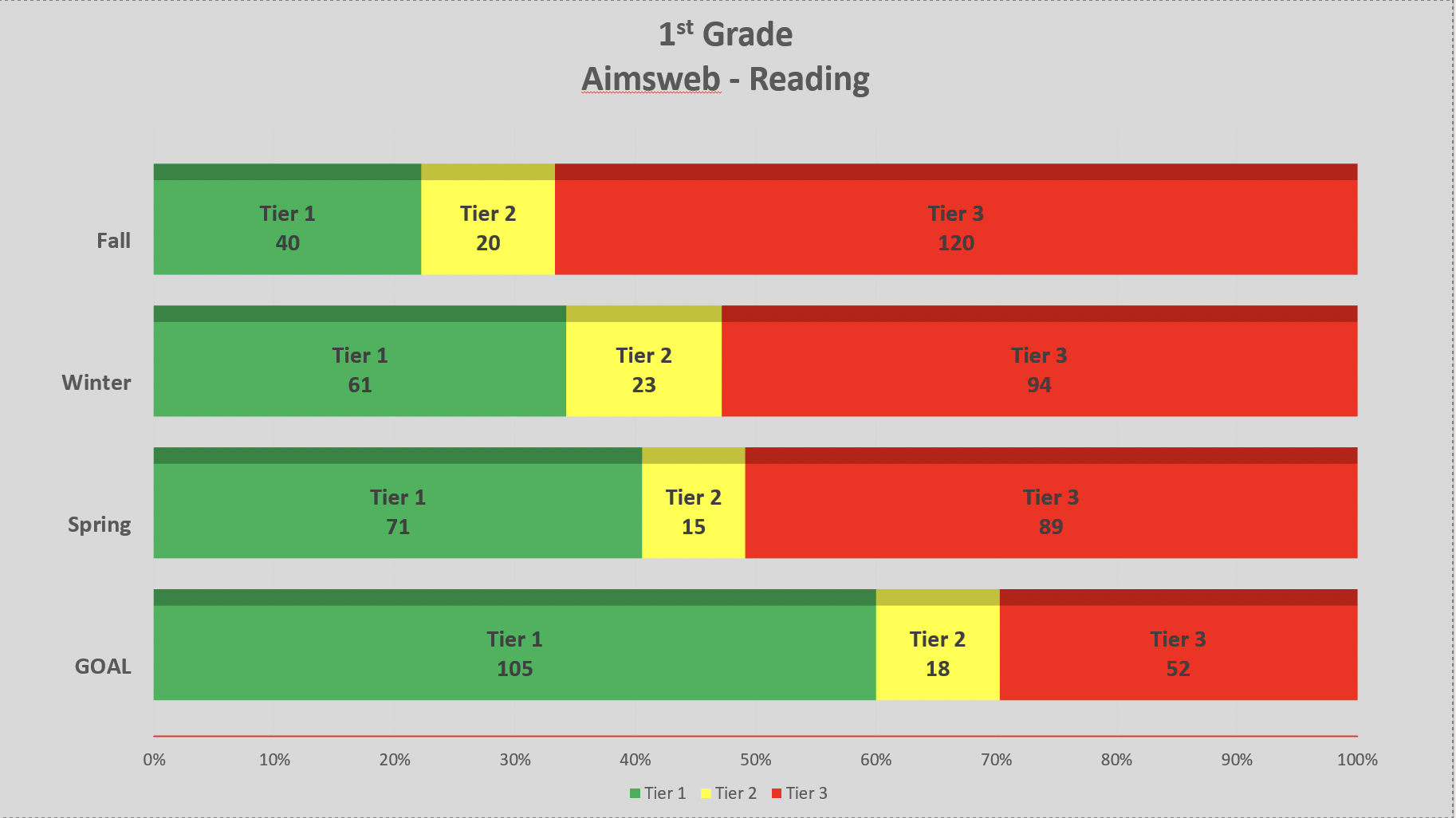
At the beginning of the year, HES had only 40 first grade students in Tier 1 for Reading, but increased that number to 71 by the spring. They fell short of their goal of 105, but still showed good progress.
The number of first grade students in Tier 3 at the beginning of the year shrank by 31 by the end of the year, but still totaled nearly half the grade. While progress was made, steps are being taken to focus more on focused interventions for next school year.
HES – Second Grade – Reading
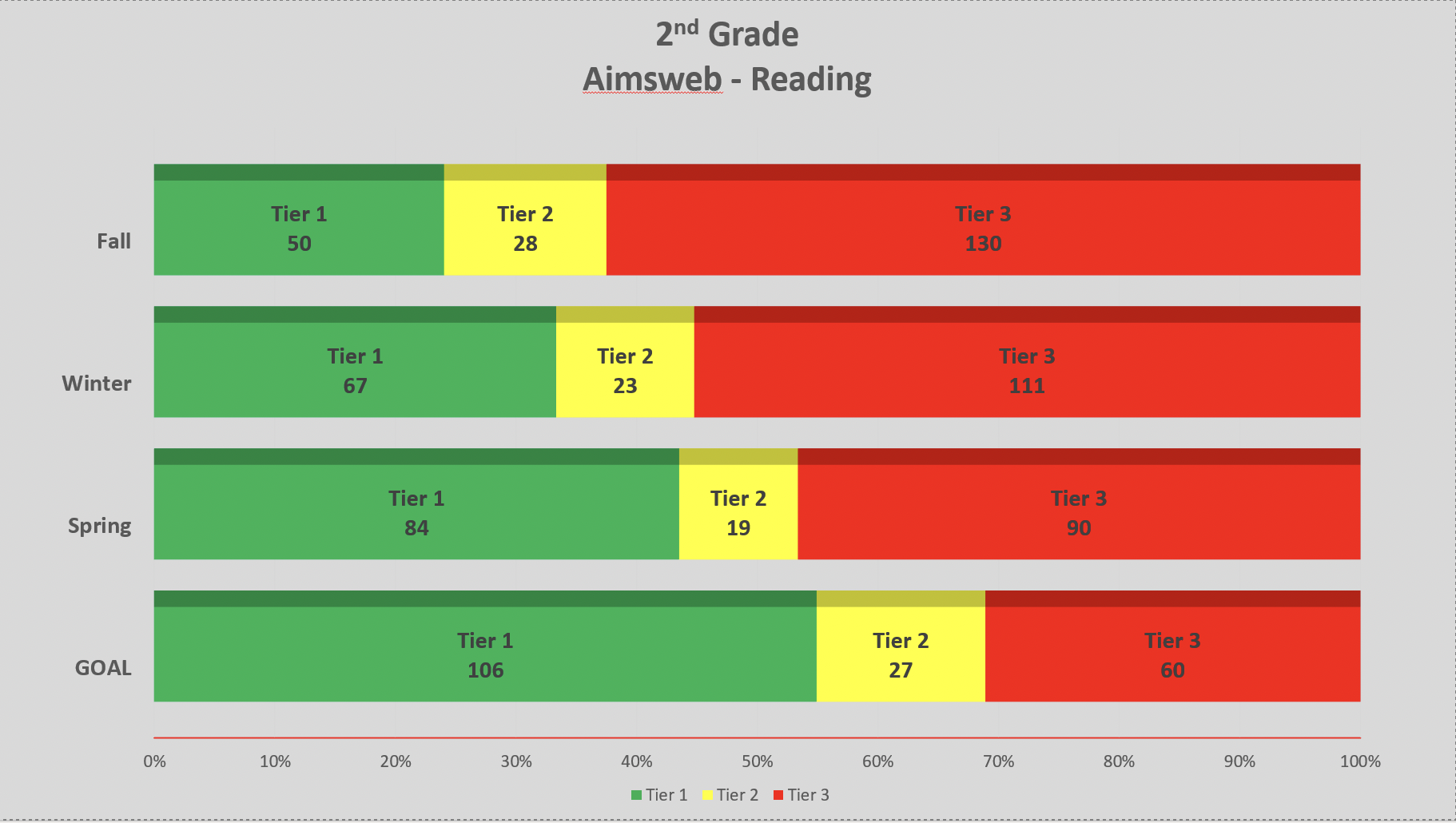
Second grade students at HES in Tier 1 Reading grew from only 25% of the grade to 45% of the grade by the end of the year. While falling short of the goal, growth was still seen among the students.
More importantly, Tier 3 students in second grade shrank by 40 from the beginning of the year to the end of the year.
HES – First Grade – Math
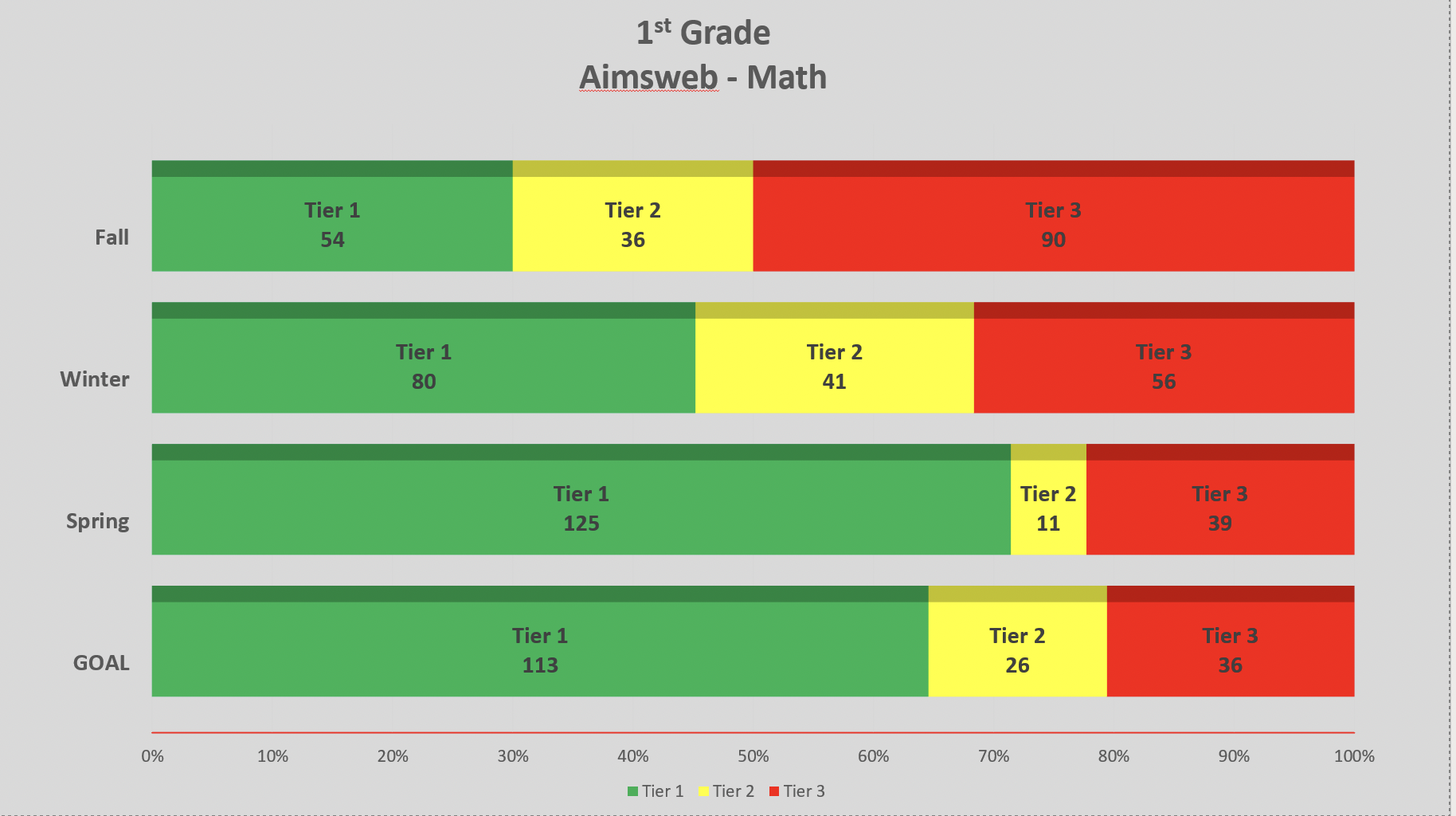
The growth in first grade Math during the year at HES was phenomenal!
Tier 1 students more than doubled from the beginning of the year to the end of the year with nearly 75% of all first grade students in Tier 1 after the spring assessment. HES first grade students surpassed their set goal of Tier 1 students by over 5%.
Tier 3 students dropped from just over 50% to only roughly 20% by the end of the year! Moving that many students out of Tier 3 support is simply amazing. Great work by our first students and teacher at HES!
HES – Second Grade – Math
 Not only did HES first graders show tremendous growth in Math, so did HES second grade students.
Not only did HES first graders show tremendous growth in Math, so did HES second grade students.
Tier 1 students increased by almost 100 from the fall to the spring. At the beginning of the year, only 25% of second grade students were in Tier 1 for Math. However, by the end of the year, nearly 70% of students had made their way to Tier 1. They surpassed their goal by 5%!
They also decreased their number of Tier 3 students from 117 to only 41 by the end of the year! Well done.
HES – IReady Data
IReady data is broken down into five sub-groups and is an assessment that compares well with the TNReady assessment based on the style of questions that are asked. Here is how the scoring is broken down:
Mid/Above grade level: this group is made up of students who are proficient or mastering the grade level educational standards being taught.
Early on grade level: this group is made up of students who are on track to mastery or proficiency of the grade level subject being taught.
1 grade below: this group of students is one grade behind their current grade level as it pertains to the standard being taught.
2 grades below: this group of students is two grades behind their current grade level as it pertains to the standard being taught.
3 grades below: this group of students is three grades or more behind their current grade level as it pertains to the standard being taught.
HES – First Grade – Reading
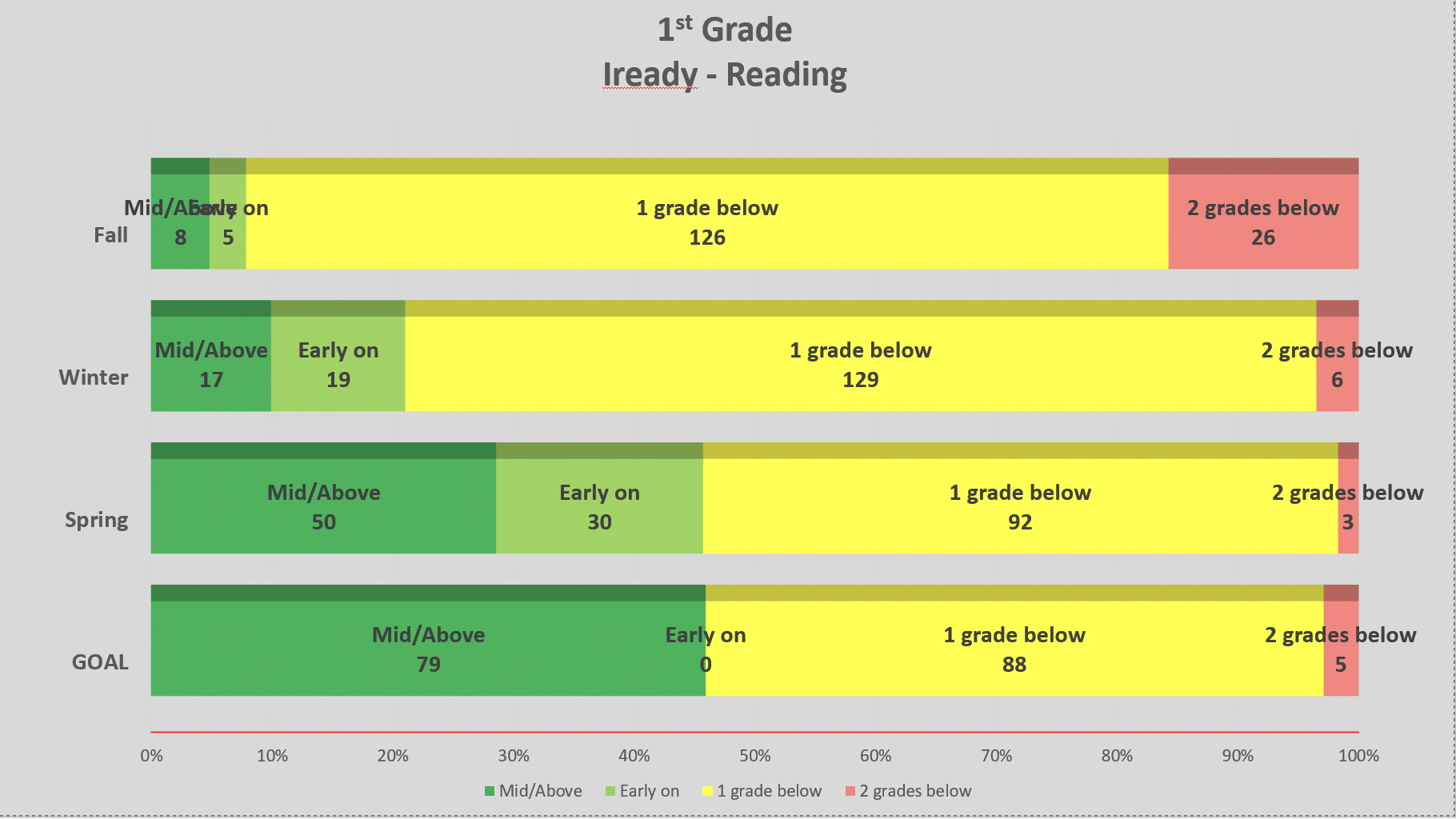
HES first grade students showed outstanding growth on their IReady reading assessment. Only 13 students were on or above grade level on the fall assessment. By the end of the year, however, 80 students were on or above grade level – an increase of 35%.
Students below grade level shrank from 126 to only 92 by the end of the year.
HES – Second Grade – Reading
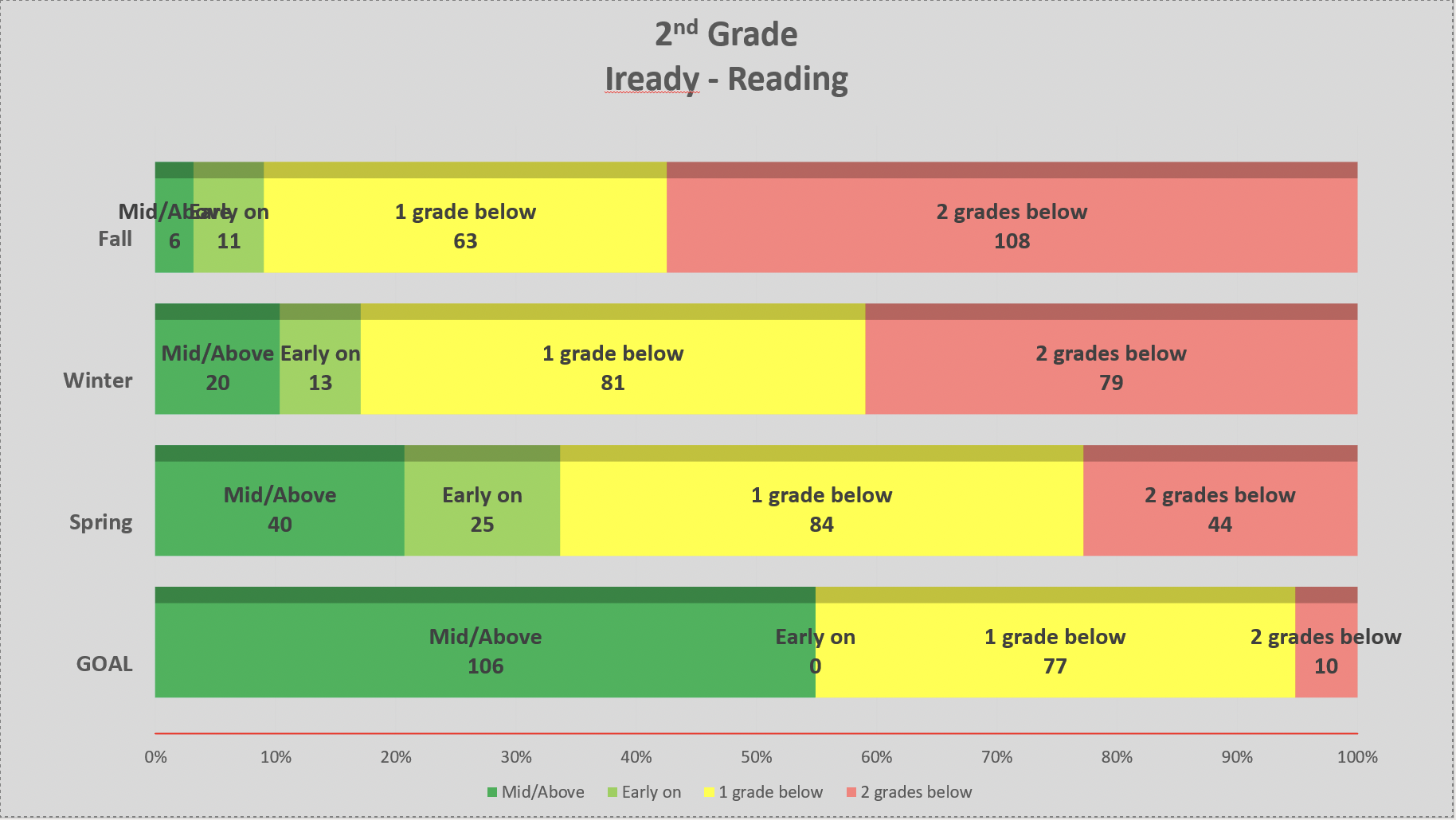 Second grade students in HES showed modest gains on the IReady Reading assessment moving a total of 48 students into Tier 1 over the course of the school year.
Second grade students in HES showed modest gains on the IReady Reading assessment moving a total of 48 students into Tier 1 over the course of the school year.
Students below grade level shrank by 43 students, but still made up nearly 65% of the grade.
HES – First Grade – Math
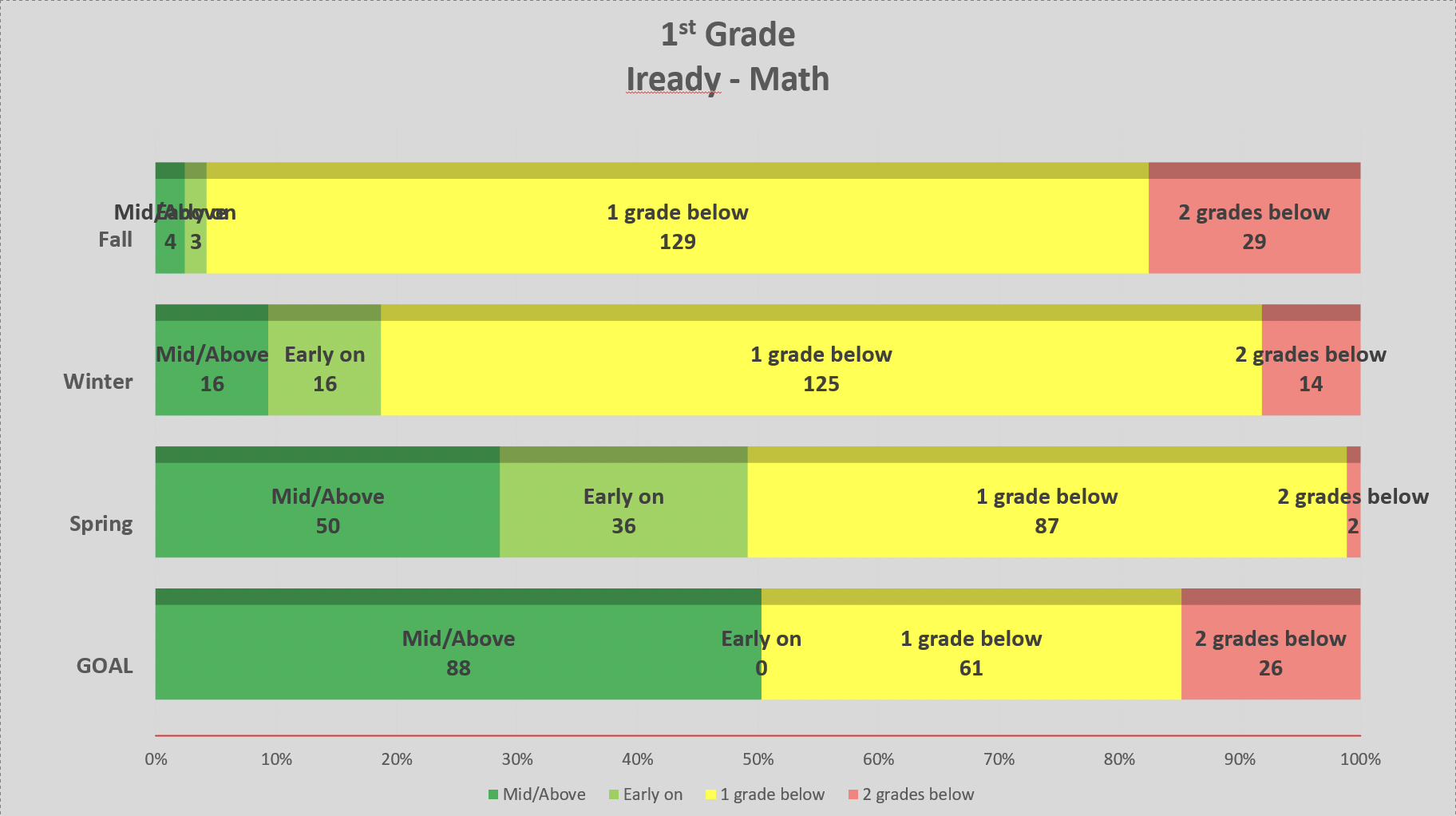 Much like on the AimsWeb Math assessments, first grade students in HES showed outstanding growth on the IReady Math assessment. Only 7 students were on or above grade level in the fall, but that number increased to 86 by the end of the year and increased to nearly half the grade!
Much like on the AimsWeb Math assessments, first grade students in HES showed outstanding growth on the IReady Math assessment. Only 7 students were on or above grade level in the fall, but that number increased to 86 by the end of the year and increased to nearly half the grade!
Students who were two grades below grade level shrank from 29 to only 2 by the end of the year. This is vitally important for students to make up academic ground while they are young, so they don’t fall too far behind and continue to lose ground.
HES – Second Grade – Math
 HES second grade students also showed gains in Math. On or above grade level students increased from only 7 in the fall to 67 by the end of the year. That’s an increase of 60 students!
HES second grade students also showed gains in Math. On or above grade level students increased from only 7 in the fall to 67 by the end of the year. That’s an increase of 60 students!
While the goals set for this particular assessment were not met, the growth that was made was still substantial and positive.
HES – Second Grade – TCAP – Reading and Math
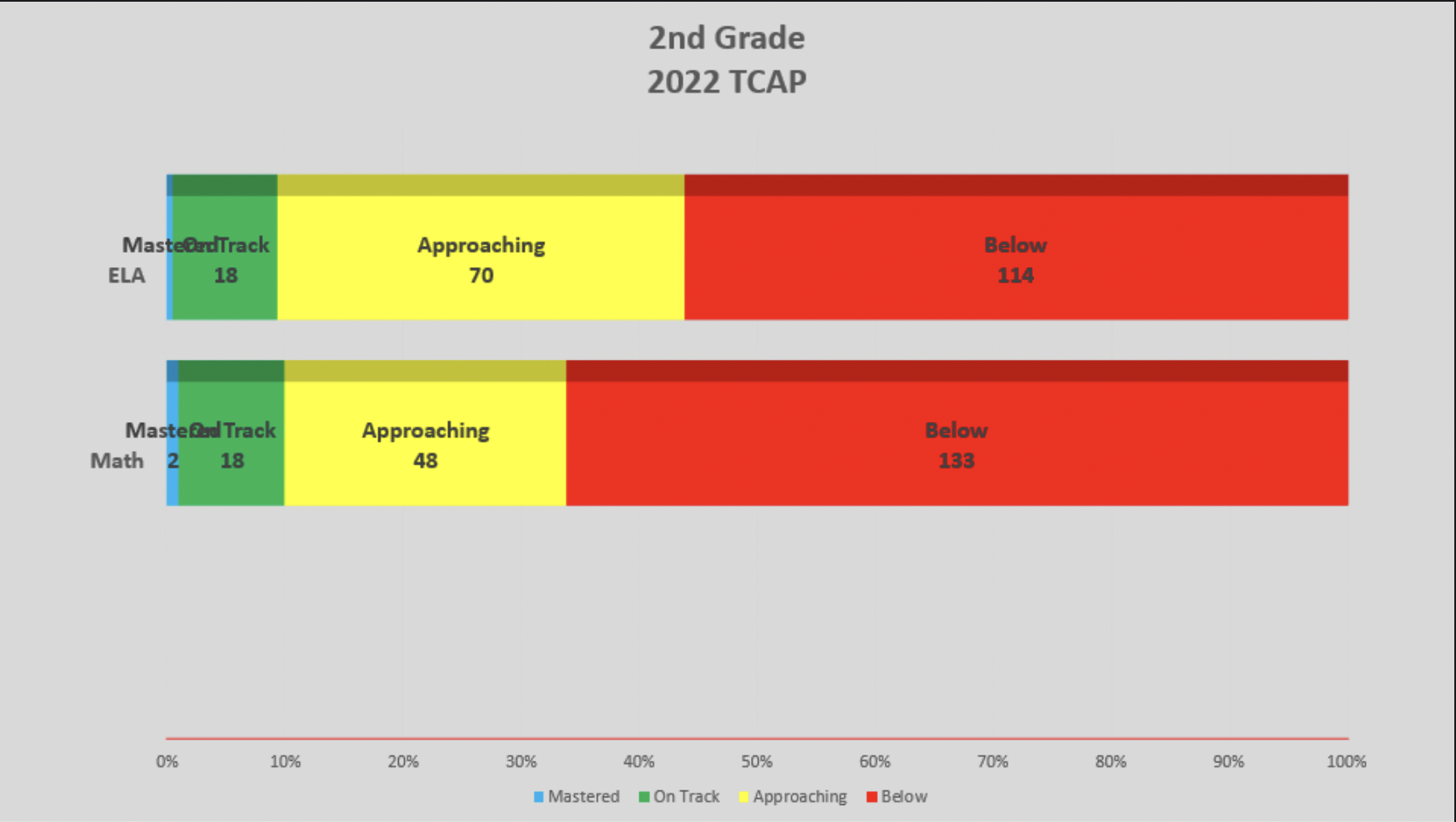
In English/Language Arts, 45% of HES second grade students were approaching, on track, or above grade level. Less than half is not ideal, however, when paired with the other assessments, we know that systems and structures are in place for growth.
In Math, 38% of HES second grade students were approaching, on track, or above grade level.
This is only a starting point for our second grade students. As they progress through their educational career in HCS, we will be able to compare this data with future TCAP assessments and monitor growth on this particular type of assessment which is only given once a year.
As with all data in HCS, growth is the priority. We also want to ensure that we are not using data as simply a measuring tool, but something that can be used to target learning areas that need improvement.
The growth HES showed throughout the year is encouraging and gives the faculty and staff an accurate read on the learning taking place and the best ways to supplement that learning next year.


